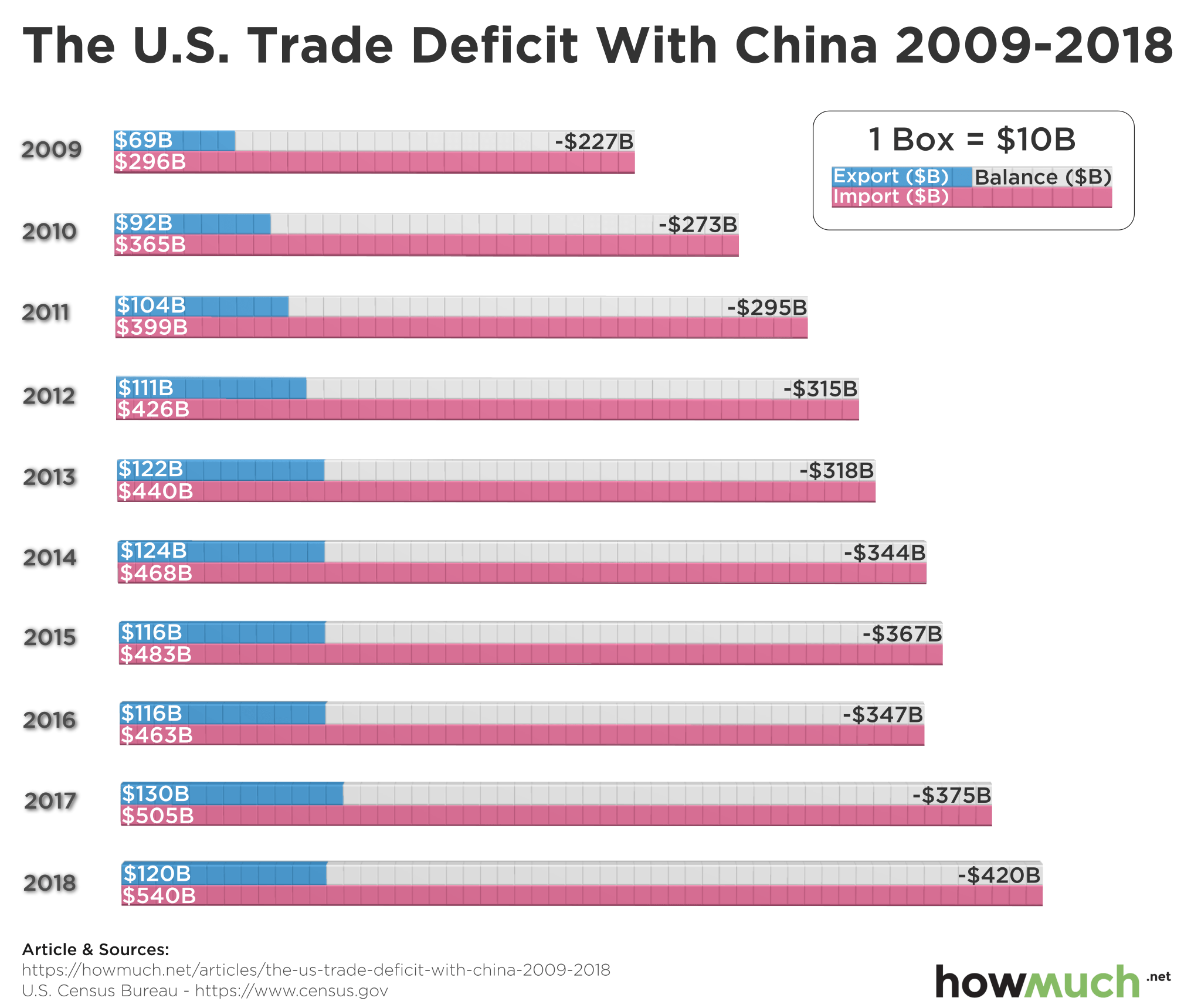Since 2010, the United States and China have had the world’s largest economies by GDP. But one interesting difference is that the U.S. is the world’s biggest importer while China is the world’s biggest exporter. The U.S. is currently China’s biggest trade partner, but recent talks about tariffs have highlighted the imbalance of imports and exports between the two countries. As economic tensions continue to rise, here is a look at how the trade deficit between the U.S. and China has changed over the past ten years.
Q1 hedge fund letters, conference, scoops etc
- Every year from 2009 to 2018, the U.S. has imported more goods from China than it exported to China.
- Over the past ten years, the trade deficit has almost doubled.
- For every year except 2016, the total volume of trade between the two countries has steadily increased.
- Percentage-wise and in gross numbers, the trade deficit grew the most between 2009 and 2010, during the Great Recession.
This visualization is based on the U.S. Census Bureau’s International Trade Data, which provides monthly reporting of the nominal value of imports and exports between the U.S. and China. In the visualization itself, the blue boxes represent the value of exports from the U.S. to China, while the pink boxes represent the value of imports from China to the U.S. The gray boxes with the negative number at the end represent the deficit, which is calculated by subtracting the exports from the imports. Each box in the visualization represents $10 billion. All values are expressed in USD, and these numbers have not been adjusted for inflation.
U.S. Deficit From 2009 to 2018
- 2009: $227B
- 2010: $273B
- 2011: $295B
- 2012: $315B
- 2013: $318B
- 2014: $344B
- 2015: $367B
- 2016: $347B
- 2017: $375B
- 2018: $420B
With the ongoing trade war, both the U.S. and China are levying tariffs on imports of each other’s products. For U.S. consumers, this means that certain products manufactured in China are now more expensive to buy. The intention is to deter consumers from buying products made in China. The tariffs have affected products including consumer items, medical equipment, and agricultural products like soybeans. Despite these tariffs going into effect on both sides in late 2018, imports from China increased and exports from the U.S. decreased that year. With the G20 summit coming up later this month, President Trump and President Xi Jinping are expected to meet and discuss the current trade situation.
What do you think about the balance of trade between the U.S. and China? Please let us know in the comments!
Data: Table 1.1
Article by HowMuch

